|
History of the Ardabil Carpet
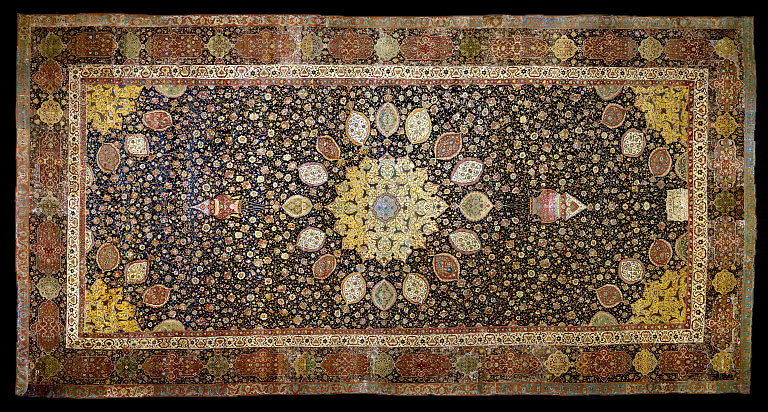
Why the Ardabil Carpet was made
One of the main sights in the town of Ardabil in north-west Iran
(Azerbaijan Province) is the shrine of Shaykh Safi al-Din Ardabili, who
died in 1334. The Shaykh was a Sufi leader, who trained his followers in
Islamic mystic practices. After his death, his followers remained loyal to
his family, who became increasingly powerful.
In 1501, one of his descendants, Shah Isma'il, seized political power.
Isma'il was the founder of the Safavid dynasty, named after Shaykh Safi
al-Din.
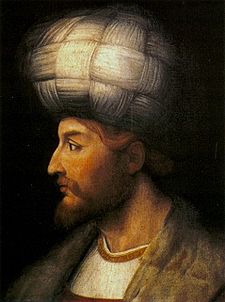
Shāh Ismāil Abū l-Muzaffar bin Haydar
bin Sheikh Junayd as-Safawī (1487 - 1524), was the founder of the
Safavid Empire, which survived until 1736 |
The Safavids, who ruled without a break
until 1722, promoted the shrine of the Shaykh as a place of pilgrimage. In
the late 1530s, Isma'il's son, Shah Tahmasp, enlarged the shrine, and it
was at this time, too, that the carpet was made as one of a matching pair
|

Shah Tahmasp or Tahmasb I (1514 – 1576) was an influential Safavid
Shah, who enjoyed the longest reign of any member of the Safavid
dynasty. He was the son of Ismail I and Shah-Begi Khanum (known
under the title Tajlu Khanum) of the Turcoman Mawsillu tribe.
from the painting at the Chehel Sutun Palace, Isfahan |
The completion of the carpets was marked
by a four-line inscription placed at one end. The first two lines are a
poetic quotation that refers to the shrine as a place of refuge:
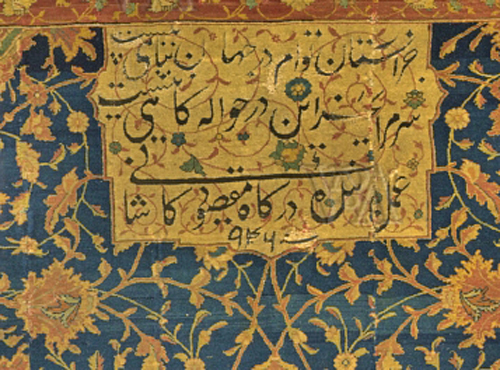
V&A
Ardebil carpet inscription
'Except for thy threshold, there is no
refuge for me in all the world.
Except for this door there is no resting-place for my head.'
جز آستان توام در جهان پناهی نیست
سر مرا بجز این در حواله گاهی نیست
The third line is a signature, 'The work
of the slave of the portal, Maqsud Kashani.' Maqsud was probably the court
official charged with producing the carpets. He was not necessarily a
slave in the literal sense but called himself one to express humility,
while the word for 'portal' can be used for a royal court or a shrine.
Perhaps Maqsud meant both, as in this case the court was the patron of the
shrine.
The fourth line contains the date 946 in the Muslim calendar, which is
equivalent to AD 1539 - 1540.
The Ardabil Carpet and the V&A
The two Ardabil carpets were still in the shrine of Shaykh Safi al-Din in
1843, when one was seen by two British visitors. Thirty years or more
later, the shrine suffered an earthquake, and the carpets were sold off,
perhaps to raise funds for repairs. The damaged carpets were purchased in
Iran by Ziegler & Co., a Manchester firm involved in the carpet trade.
Parts of one carpet were used to patch the other. The result was one
'complete' carpet and one with no border.
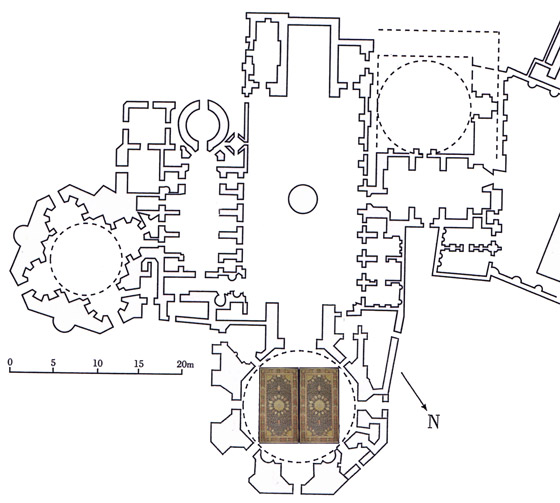
Plan of the shrine at Ardabil, showing where the carpets were situated
In 1892, the larger carpet was put on
sale by Vincent Robinson & Co. of London. The designer William Morris went
to inspect it on behalf of this Museum. Reporting that the carpet was 'of
singular perfection … logically and consistently beautiful', he urged the
Museum to buy it. The money was raised, and in March 1893 the Museum
acquired the carpet for £2000.
The second, smaller carpet was sold secretly to an American collector, and
in 1953 it was given to the Los Angeles County Museum of Art. The Ardabil
carpet hung on the wall in this gallery for many years. In 2006, the
Museum created the extraordinary case in the centre of the gallery so that
the carpet could be seen as intended, on the floor. To preserve its
colours, it is lit for ten minutes on the hour and half-hour.

Ardebil carpet at LACMA
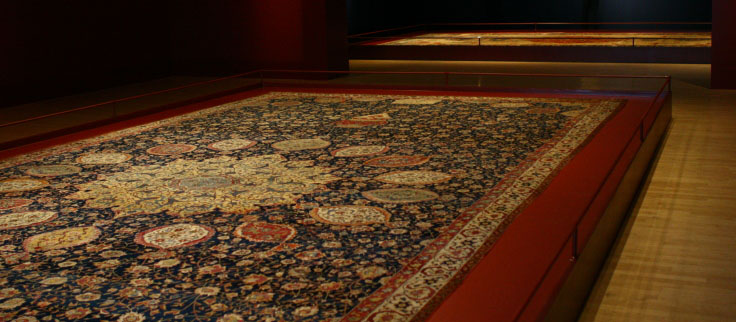
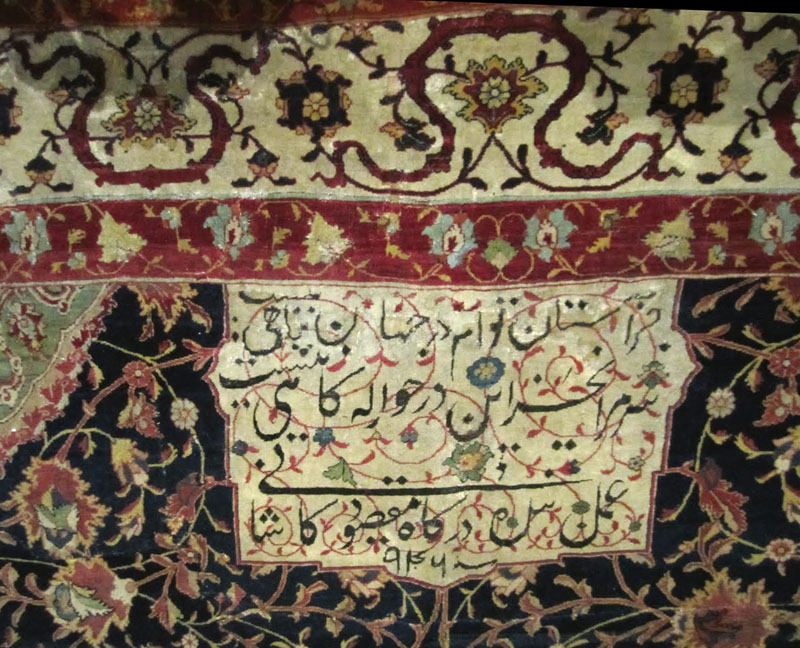
LACMA Ardebil carpet inscription

The shrine of Shaykh Safi al-Din
Ardabili (the impressive tomb tower on the right in this photograph). The
other shrine buildings were added around it.




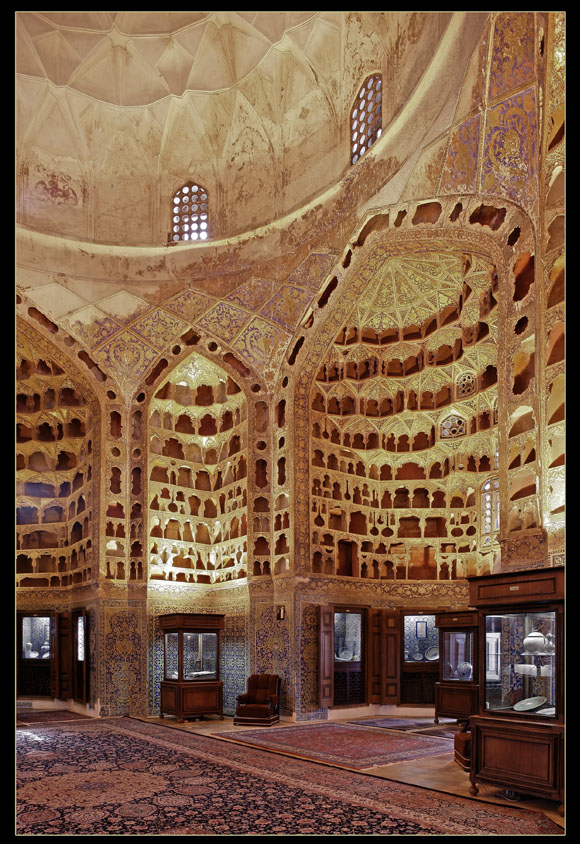
|

